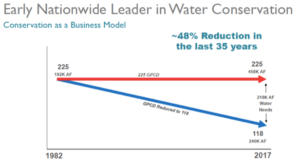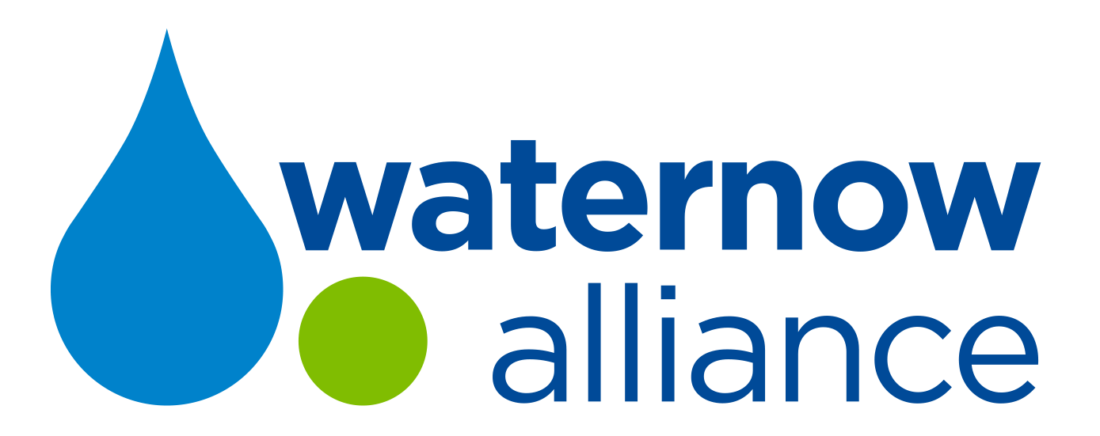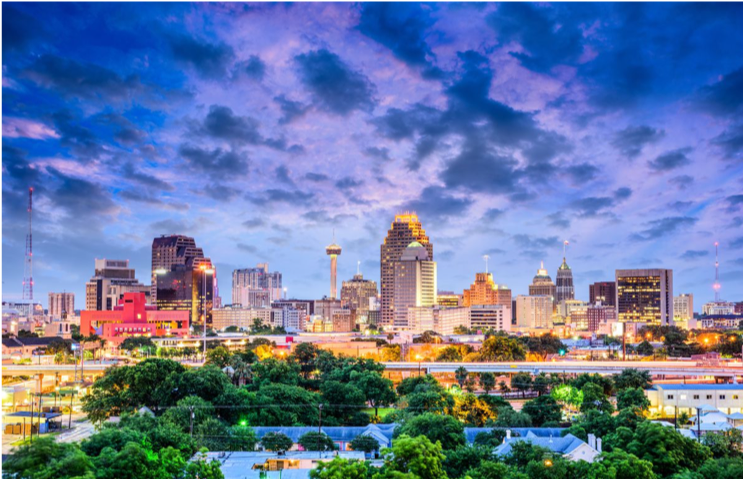The City of San Antonio is located in South Central Texas (70 miles southwest of Austin and 190 miles west of Houston) in a region of Blackland Prairie grassland and oak woodlands. San Antonio overlies parts of four major aquifers. Chief amongst these is the Edwards Aquifer, which provides 42% of the city’s water supply during prolonged drought conditions. Over the last few decades, water supply in San Antonio had become increasing limited due to legislative restrictions on municipal aquifers, rapid population growth and an expanding economy, a period of prolonged drought, and a need to meet the requirements of the Endangered Species Act.
In the face of these water management challenges and to supply the city with clean water, more than 25 years ago the San Antonio Water System (SAWS) created a program that uses financial incentives, public education and outreach initiatives, and reasonable regulation to help the community use water more efficiently. SAWS’ “conservation first” approach treats conservation as a source of supply. Some of SAWS’ financial incentives include rebates for outdoor irrigation systems, water-saving plants, and previous patio materials. SAWS has also seen particular success in growing cost-effective partnerships with a thriving set of local educational organizations and programs focused on conservation. SAWS allocates $3.5 million, or 60% of its $5.4 million conservation budget, for incentive and education programs directly. It also makes other significant investments in fulfilling conservation goals.
By deploying localized water management strategies on a community-wide basis and making large-scale investments in rebate and education programs, SAWS has reduced water consumption in San Antonio by nearly 50%, kept rates affordable for all customers, greened urban spaces, and protected endangered species among many other benefits. And SAWS’ conservation efforts have helped the utility avoid the need to develop even more water supplies to support the city’s population growth over the last 20 years, which saves money.
 From San Antonio, Texas, to Milwaukee, Wisconsin, as part of WaterNow’s Tap into Resilience initiative to pull together a set of case studies of communities experiencing the cost savings, community benefits, and environmental improvements of deploying localized strategies at scale, WaterNow has interviewed over a dozen city and utility leaders already tapping into localized water strategies for fast, affordable, and impactful solutions to their water challenges. All the details of the SAWS’ Tap into Resilience case study will be part of on WaterNow’s Tap into Resilience website that will be launching in March 2019. SAWS’ Conservation Director, Karen Guz, will also be talking about these programs at WaterNow’s upcoming Tap into Resilience Summit in Austin, Texas.
From San Antonio, Texas, to Milwaukee, Wisconsin, as part of WaterNow’s Tap into Resilience initiative to pull together a set of case studies of communities experiencing the cost savings, community benefits, and environmental improvements of deploying localized strategies at scale, WaterNow has interviewed over a dozen city and utility leaders already tapping into localized water strategies for fast, affordable, and impactful solutions to their water challenges. All the details of the SAWS’ Tap into Resilience case study will be part of on WaterNow’s Tap into Resilience website that will be launching in March 2019. SAWS’ Conservation Director, Karen Guz, will also be talking about these programs at WaterNow’s upcoming Tap into Resilience Summit in Austin, Texas.

